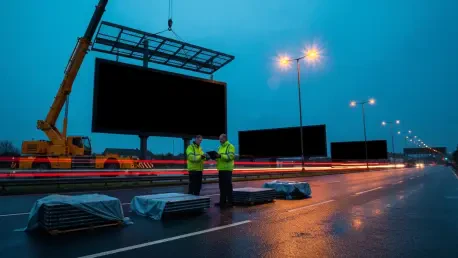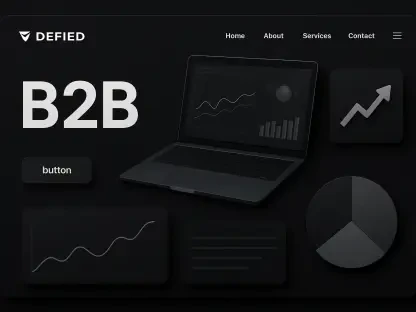The sudden collapse of a fast-growing roadside billboard operator jolted the UK out-of-home market and surfaced a hard truth that growth stories can still fail when control over infrastructure sits elsewhere and lease negotiations turn against the media owner, even when fresh capital, product innovation, and national scale appear to signal momentum. The liquidation of 75Media arrived after months of talks with its infrastructure landlord reportedly broke down, cutting off access to core sites and turning a rapid expansion into an abrupt full stop.
Headquartered in Leeds with regional offices across major cities, 75Media positioned itself as a top-tier wide-format owner. It scaled quickly, adding 595 classic 48-sheet locations in 2024 to reach 1,175 sites, hiring senior commercial talent, and unveiling tools like BOB for booking and Ignite for SMB onboarding. A seven-figure investment announced in March underscored the ambition, yet negotiations over site control became the decisive constraint.
The UK Out-of-Home Landscape: Scale, Structure, and Significance
Roadside OOH spans classic 48/96-sheet billboards, DOOH, large-format superstructures, transport, street furniture, and place-based screens. Spend has recovered post-pandemic, with DOOH lifting share as buyers lean on data, dynamic content, and flexible activation.
Ownership is often split between landlords, councils, and private site operators, while national media owners, regional specialists, and tech-led firms compete on access, measurement, and service. Programmatic exchanges, geospatial planning, and ad verification shape pricing and reach, while revenue depends on leases, agency trading, SMB sales, and automated channels within a tight regulatory frame.
Market Dynamics and Performance Indicators Shaping Outcomes
Operators are digitizing roadside panels to lift yields, but capex has risen with energy and construction costs. Consolidation continues, with competition for prime leases intensifying and payment terms pushing cash-flow strain down the chain.
Trends, Drivers, and Shifts Affecting UK Roadside OOH
Programmatic buying broadens access, yet transparency and attribution expectations keep rising. SMB-focused self-serve and membership models help fill gaps, but dependence on third-party infrastructure amplifies landlord bargaining power and step-in needs.
Inflation pushes a shift to energy-efficient screens, while agency trading dynamics and long pay cycles challenge mid-size operators. Integration risks compound when estates scale faster than compliance, maintenance, and sales coverage.
Market Data, Performance Signals, and Near-Term Outlook
OOH spend continued to recover, with DOOH gaining share and premium corridors holding price. Occupancy and sell-through diverge between classic and digital, and estate growth favors conversions over pure greenfield builds.
Financing costs remain elevated, tempering aggressive roll-ups even as private capital stays selective. Forward indicators hinge on pipeline bookings, programmatic demand, and regional variance, with scenarios spanning lease pressure downside and digitization-led upside.
Structural Challenges and Fault Lines Exposed by the 75Media Case
The case highlights infrastructure dependency, where lease renegotiations can outrank growth metrics. Rapid expansion without balanced liquidity magnified capex load and cash burn.
Concentration across landlords or regions increased exposure, while digital-versus-classic economics stretched break-even timelines. Limited step-in rights or alternative access left little room for maneuver.
Regulatory and Contractual Pressures on OOH Operators
Planning and permitting remain variable by authority, and ASA rules shape content and targeting. Environmental standards and safety obligations raise operating thresholds.
Landlord contracts around term, indexation, termination, step-in, and assignment dictate resilience. Strong compliance, site records, audits, and legal reserves reduce tail risks.
Strategic Outlook and Pathways for a More Resilient OOH Sector
Operators should diversify landlord bases, lock protective covenants, and sequence digitization to proven corridors. Capital discipline, JV and revenue-share models, and staged upgrades can align growth with cash flows.
A tech roadmap spanning booking tools, programmatic readiness, measurement, and efficient hardware supports pricing power. Balanced agency and SMB pipelines, self-serve portals, and flexible products stabilize demand, while selective M&A and municipal alliances strengthen access.
Conclusion and Recommendations
The episode showed that scale and innovation were no substitute for durable site control. Operators were advised to negotiate step-in and assignment protections, bolster liquidity buffers, and apply scenario planning for lease shocks. Investment in measurement and self-serve would have broadened demand, while targeted digitization in high-yield corridors limited overexposure. For investors, the strongest prospects featured disciplined capex, robust compliance, and diversified access. A cautious growth path centered on contractual robustness, operational rigor, and focused innovation offered the most credible way forward.









